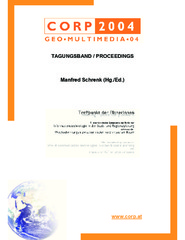| dc.description.abstract | During the last twenty years the planning profession has undergone a tremendous transformation. Not only have the planning
philosophy and ideas changed, but the overall framework for the planning discipline has changed as well. The changing reality
affects the way planners work, but it also encroaches on the very meaning of the profession itself, and the role it plays. The planning
world of today is a different world, and a new culture of planning is on the horizon.
There are many important processes that participate in creating what is referred to as a new framework for the planning practice.
While some argue that globalisation is a fundamental phenomenon of our time, others are of the view that the phenomenon of the
information and communication explosion marks the era. Often placed on the top of development agenda world-wide, the two rank
amongst the key determinants of the future of urban development. Taken alone however they do not determine the urban future nor
do they guide and shape the cities independently of other forces - political, social, economic, environmental and cultural- their
influence on urban development, and planning and management mechanisms, are undeniable and ever increasing. If globalisation
reflects and demands fundamental changes in our ideas about society and the organization of space, it is also the case that the
information and communication involve fundamental transformations in our concepts of the relationship between humanity and
space, and indeed of the very concepts of humanity and space.
For some, it is planning in the era of globalisation that is the issue today, for the others it is the information age that provides the
background. However, the two are interrelated and connected and often, they work together. Both are complex and multi-faceted
phenomena, therefore most time neither one could be analysed and discussed independently from the other. For the purpose of
focusing on particular relationship between the age of information and the planning practice, which is the focus of this conference
and a general topic of this presentation, the reduction is necessary, and in this paper is being undertaken intentionally.
The key issue today is the mobility of information, which is the crucial factor in the world of international competition. A new
generation of information and communication technologies creates a new opportunity for this process. The global electronic network
supports mobility in space and time, and as such is relevant for any planning or development action, be it at a local, national or
international level. Yesterday of a limited use, tomorrow will become an intrinsic part of the professional routine. E-space is not only
a place where people meet meet but it is also an economic place, a powerful economic resource that fully participates in shaping
development of many regions and cities world-wide. As such, it is vital to the planning profession. Transparency, efficiency and
economy, the key words of the e-option, support a call for information networking on the Internet to channel organisational and
operational resources for planning purposes.
This paper casts some light on the e-based planning option. Starting from the belief that it is the context that creates new
opportunities and also make them successful, this is a general view on the reality within which planning is taking place today that
will open the discussion, following which, discussion will focus upon the emerging e-based planning paradigm, and the questions
associated with it. The potentials of the e-based alternative will be outlined and analysed against the principles of good planning
practice. The challenges of the alternative will be highlighted/identified in the last section, and debated vis-à-vis the observed
benefits. Implications for the concrete planning practice will be at the heart of the overall discussion. | en |

